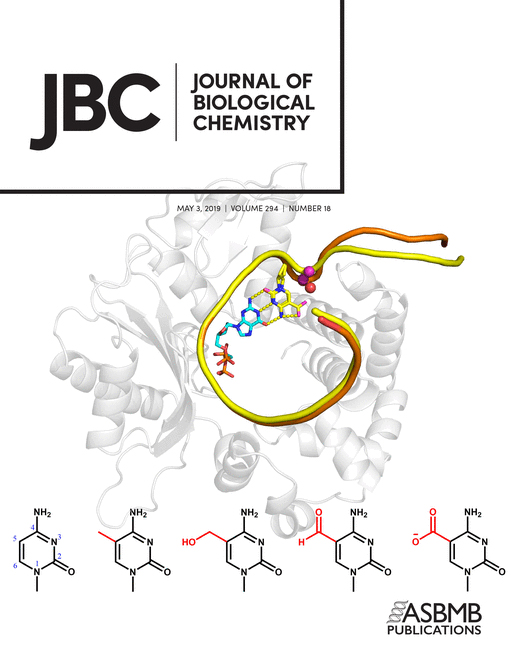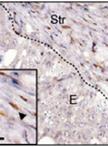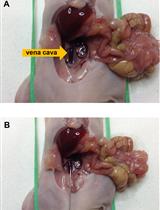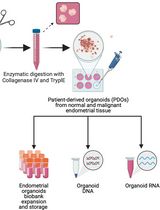- EN - English
- CN - 中文
In vivo Tumor Growth and Spontaneous Metastasis Assays Using A549 Lung Cancer Cells
利用A549肺癌细胞进行肿瘤生长和自发性转移的体内检测
发布: 2020年04月05日第10卷第7期 DOI: 10.21769/BioProtoc.3579 浏览次数: 8384
评审: Julie Sandra Di MartinoAna Santos AlmeidaAnonymous reviewer(s)
Abstract
Metastasis accounts for the majority of cancer related deaths. The genetically engineered mouse (GEM) models and cell line-based subcutaneous and orthotopic mouse xenografts have been developed to study the metastatic process. By using lung cancer cell line A549 as an example, we present a modified protocol to establish the cell line-based xenograft. Our protocol ensures sufficient establishment of the mouse xenografts and allows us to monitor tumor growth and spontaneous metastasis. This protocol could be adapted to other types of established cancer cell lines or primary cancer cells to study the mechanism of metastatic process as well as to test the effect of the potential anti-cancer agents on tumor growth and metastatic capacity.
Keywords: Cell line xenograft (细胞系肿瘤移植模型)Background
The 5-year survival rate for patients with advanced stage lung cancer is less than 15%, with the majority of patients die from metastatic diseases (Heist and Engelman, 2012; Whitsett, et al., 2013; D'Antonio et al., 2014; Steeg, 2016). Therefore, using mouse models to investigate the mechanisms of lung cancer invasion and metastasis could facilitate the development of novel strategy to control the metastatic process.
Metastasis is a multi-step process that includes local invasion, intravasation, and survival in the circulation, extravasation, and establishment of macrometastasis in the distant site. Both mouse xenografts and the genetically engineered mouse (GEM) models have been used to study lung cancer metastasis. The GEM models, mimicking the genetic signature of human lung cancer such as TP53, K-ras and LKB1 provide the immunocompetent system to study the mechanism of metastatic process and to investigate how novel anti-cancer agents affect the process (Dutt and Wong, 2006; Zheng et al., 2007). Patient-derived xenografts (PDX) models take tumor heterogeneity and the contribution of tumor microenvironment into the consideration and maintain the features of the primary patient tumor such as gene expression profiles and drug response (Morton and Houghton, 2007, Okada et al., 2019). Cell line-based xenografts either by subcutaneous or orthotopic injection or implantation of cells into mice are commonly used to study lung cancer metastasis. The orthotopic transplantation of tumor cells into mouse lung resembles most closely to human cancer in the aspect of tumor histology, tumor vasculature, gene expression, and responsiveness to drug treatment as well as the metastatic process (Khanna and Hunter, 2005) and this methodology has been reported previously (Justilien and Fields, 2013). Due to the complexity of the metastatic process, there is no single system that can model all of the steps of metastasis (Khanna and Hunter, 2005). The strength and weakness of different mouse models of metastasis were recently comprehensively reviewed (Gomez-Cuadrado et al., 2017). In this protocol, we used lung cancer cell line A549 as an example and utilized the methodology for generating PDX models to establish cell line-based xenograft and monitor tumor growth and spontaneous metastasis. Unlike the classical subcutaneous injection, we performed surgery on mouse to generate a wide subcutaneous pouch to increase the contact area of the cells and matrigel mixture with the tissue. In addition, the surgical incision is big enough to allow us to use the wide bore pipet tip to implant the cells and matrigel mixture smoothly and to prevent the destruction of the cells. This protocol ensures sufficient establishment of the mouse xenografts subcutaneously and allows us to monitor the formation of micrometastasis. This protocol can be adapted to study the mechanisms of metastatic process using the primary or established cell lines from other cancer types and to test the effect of the potential anti-cancer agents on tumor growth and metastatic capacity.
Materials and Reagents
- 10 cm cell culture dishes (Corning, catalog number: 430167 )
- 1.5 ml Eppendorf tubes
- Pipet tips
- Mouse (NOD.CB17-Prkdcscid/J, The Jackson Laboratory, catalog number: 00 1303 )
- A549 cells (ATCC, catalog number: CCL-185 )
- DMEM/F12 medium (Sigma, catalog number: D8437 )
- Pen/Strep/Glutamine (Gibco, catalog number: 10378-016 )
- Fetal Bovine Serum (FBS) (Sigma, catalog number: F0926 )
- Phosphate-buffered saline (PBS) (Thermo Fisher, catalog number: 10010-049 )
- Growth Factor Reduced Matrigel (Corning, catalog number: 354230 )
- Analgesic (Buprenorphine HCl, 0.1 mg/kg SQ, ZooPharm)
- Trypsin-EDTA (Gibco, catalog number: 25300-054 )
- 70% ethanol (Decon Labs, catalog number: DSP-MD-43)
- 10% neutral buffered formalin (Sigma, catalog number: HT501128 )
- Hematoxylin (VWR, catalog number: 97062-216)
- Eosin (VWR, catalog number: 97061-034)
Equipment
- Sorvall Legend X1 Centrifuge(Thermo Scientific, catalog number: 75004221)
- Vi-cell XR Cell Viability Analyzer (Beckman Coulter, catalog number: 1096573) or Hemocytometer
- Operating Scissors (Fisher, catalog number: 13-806-4)
- Exel International Sterile disposable scalpels with surgical steel blades size 11 (Fisher, catalog number: 14-840-01)
- Dissecting forceps, fine tip, curved and straight (Fisher, catalog numbers: 08-875 and 08-880)
- Biological safety cabinet
- Surgical Autoclip System Kit (clip applier and remover are included) (Fine Science Tools, catalog number: 12120-00)
- Ear tags (1005-1) and Applicator (1005s1) (National Band & Tag Company)
- Digital Caliper 150 mm/6 (World Precision Instruments, catalog number: 501601 )
- E·Z Anesthesia (Euthanex CORP., Serial NO: EZV2007 )
Software
- Olympus cellSens Standard 1.17 image analysis software (Olympus, Center Valley, PA)
- SAS9.4 (SAS Institute Inc., Cary, NC, USA)
- R (Comprehensive R Archive Network, http://cran.us.r-project.org, 1997)
Procedure
文章信息
版权信息
© 2020 The Authors; exclusive licensee Bio-protocol LLC.
如何引用
Readers should cite both the Bio-protocol article and the original research article where this protocol was used:
- Qi, L., Knifley, T., Piecoro, D. W., Rychahou, P., Wu, J., O'Connor, K. L. and Chen, M. (2020). In vivo Tumor Growth and Spontaneous Metastasis Assays Using A549 Lung Cancer Cells. Bio-protocol 10(7): e3579. DOI: 10.21769/BioProtoc.3579.
- Liu, L., Qi, L., Knifley, T., Piecoro, D. W., Rychahou, P., Liu, J., Mitov, M. I., Martin, J., Wang, C., Wu, J., Weiss, H. L., Butterfield, D. A., Evers, B. M., O'Connor, K. L. and Chen, M. (2019). S100A4 alters metabolism and promotes invasion of lung cancer cells by up-regulating mitochondrial complex I protein NDUFS2. J Biol Chem 294(18): 7516-7527.
分类
癌症生物学 > 侵袭和转移 > 动物模型 > 细胞分离和培养
细胞生物学 > 细胞活力 > 细胞增殖
癌症生物学 > 通用技术 > 动物模型 > 细胞分离和培养
您对这篇实验方法有问题吗?
在此处发布您的问题,我们将邀请本文作者来回答。同时,我们会将您的问题发布到Bio-protocol Exchange,以便寻求社区成员的帮助。
提问指南
+ 问题描述
写下详细的问题描述,包括所有有助于他人回答您问题的信息(例如实验过程、条件和相关图像等)。
Share
Bluesky
X
Copy link













